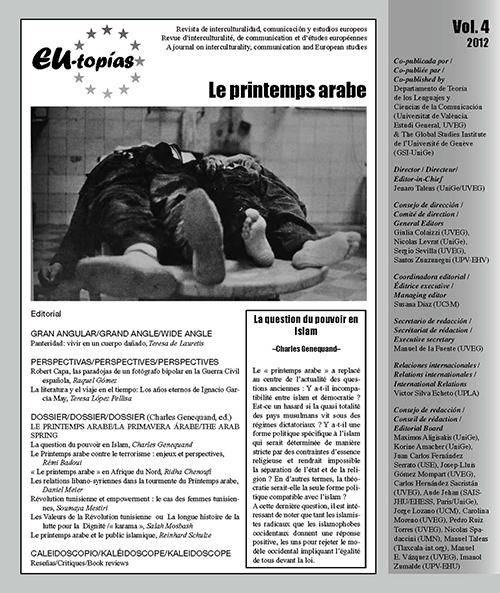Panteridad: Vivir en un cuerpo dañado
DOI:
https://doi.org/10.7203/eutopias.0.19766Keywords:
Trauma, death drive, psychoanalysis, horror movies, B-movies, Cat People, Val Lewton, asynchronicity, spectatorship, damaged body. Abstract
Abstract
Produced by horror pioneer Val Lewton and revived by feminist film theorists in the ‘80, Cat People (Tourneur, 1942) is read by the author as a text providing representation to Freud’s notion of death drive as crucial “Grenzbegriff” in psychic life. Attention to the very interesting and innovative use of asynchronous sound in the film, together with a discussion of diegetic and extra-diegetic material, allow for a reading that points to the complex connections between body and desire, otherness and human selfhood.
 Downloads
Downloads
Downloads
Published
How to Cite
-
Abstract458
-
PDF (Español)249
Issue
Section
License
![]()
The authors conserve the copyright. All content published in EU-topías. Journal of interculturality, Communication, and European Studies are subject to the license Creative Commons Attribution-NonCommercial-ShareAlike 4.0 license. The full text of the license can be found at <http://creativecommons.org/licenses/by-nc-sa/4.0>
They may be copied, used, disseminated, transmitted and publicly displayed, provided that:
- The authorship and original source of the publication is cited (journal, publisher and URL of the work).
- They are not used for commercial purposes.
- The existence and specifications of this license of use are mentioned.
It is the responsibility of the authors to obtain the necessary permissions for images that are subject to copyright.



